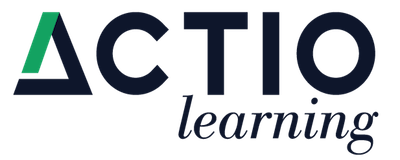The LinkedIn Learning Solutions 2017 Workplace Learning Report joins a chorus of research reflecting an expectations and results gap between L & D and the business.
Page 12 from 2017 Workplace Learning Report by LinkedIn Learning Solutions
Who else is in the chorus? Bersin by Deloitte, TrainingIndustry.com, and Brandon Hall, to name a few. Here’s a snapshot of recent published reports:
-
79% of training professionals say strategic alignment is important for business success – TrainingIndustry.com
-
92% of learning professionals say their learning strategy isn’t very effective at meeting business goals – Brandon Hall
-
59% of learning professionals have trouble connecting learning to business outcomes – Bersin by Deloitte
-
95% of learning professionals don’t excel at using data to align to the business, improve L & D efficiency, or develop effective training – Bersin by Deloitte
Similar findings emerge year after year. So, on the L & D side of the equation, what are we missing? If L & D were closing the gap, the data would reflect it.
First, let’s agree that L & D function business problems are most likely not what what concerns business leaders. Organizations expect their business units to run well, making efficient use of the various resources that are provided. L & D is not immune from those expectations and should rightly be held accountable to organizational expectations just as other functions like engineering, accounting, IT, etc. are.
Unfortunately, in most organizations the relative size of the L & D function is so comparatively small – by a number of measures like budget, staff, etc. – that even when L & D is running really well, the business impact of a smooth running operation is minimal.
We believe the research data isn’t telling us that L & D functions are poorly run. The data is telling us that L & D isn’t adequately aligned to business goals nor are they addressing the meaty, meaningful business challenges organizations have.
Let’s close the gap by focusing instead on how L & D helps business leaders to reach their goals and solve their problems. What do we mean by business goals or problems? Achieving a 5% reduction in cost of service delivery, moving a group of clients from “at risk” to “green”, or defining and reducing the time to performance are three good examples of business goals – and they’re real examples from three real client situations we’ve addressed.
Here are a few strategies we’ve used for more than 15 years to improve impact.
-
Start early. Start building alignment and figuring out anticipated impact earlier than you might think makes sense or feels comfortable
-
Align to their business goals. Start by asking every stakeholder / business leader your own versions of these three questions
-
What are your organizational goals?
-
What obstacles stand in your way?
-
How will success be measured?
-
-
Frame your training response in the context of their business goals. The training industry energetically talks about how training is delivered – and consequently, the market is increasingly diverse and complex as new technologies proliferate. That’s working against closing the gap with the business in some ways because measurable impact is often more connected to other factors such as.
-
Why something should be done – The alignment questions above are a great start to answering the “why” question.
-
Who will be impacted – Which role or roles are critical to achieving the goal or will be impacted by solving the problem?
-
What performance has to change and how?
-
When you understand Why, Who and What really well, the discussions and decisions about How to deliver training tend to take care of themselves – and business leaders are more likely to recognize how the What and How links all the way back to their goals (the why). That’s a good thing.
-
Think with a performance mindset. Business goals are more complex than a single knowledge or skill gap and require a change in performance.
You may have seen this image before, this is a concept we’ve shared previously . . .
Use Development Maps (more on Development Maps to come) to organize and sequence training and non-training experiences necessary to address complex situations and change performance.
In the end, if you start looking for alignment and impact after a project is well underway, you’ve started looking too late. Uncovering the impact will be costly – and may be difficult to find.
Want to know how Actio Learning can help you achieve business results and improve alignment? Contact us at [email protected].



